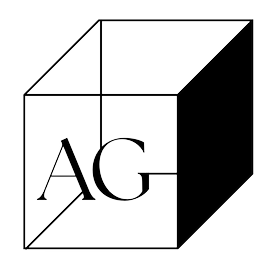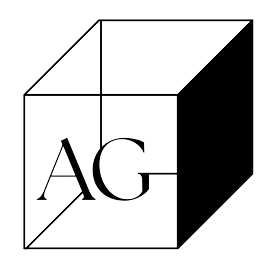Redemption Rate
Redemption Rate is defined as the percentage of customers who claim an offer or incentive.
As a KPI, redemption rate can support marketers to judge the effectiveness of their promotional initiatives by measuring the engagement and actions taken by a customer after receiving an offer or incentive. It does this by calculating the number of people who took action to claim an offer, then dividing this total by the number of people who saw the offer.
Redemption rate can be used as a short or long term measure depending on the longevity of the offer in the market. For example, shopping centres or eCommerce stores may have a limited time promotion aimed at shifting a particular product or category. In contrast, loyalty programs would measure redemption rate over a long time horizon to better understand seasonal or business cycle trends and monitor the correlation between the redemption of loyalty offers and the long term value of a customer.
Loyalty Programs
In the context of Loyalty Programs, redemption rate is used to measure the short and long term impact of incentives that are provided to already acquired customers with a goal of encouraging ongoing brand engagement. That engagement may include ongoing purchases or referrals to friends and family (see: referrals, coming soon).
Loyalty programs are often constructed to influence these commercial KPI’s such as:
- customer retention: repeat purchases, increased purchase value; and
- advocacy: solidifying a brand as preferred for themselves and as a recommendation to friends and family
Redemption rate offers a “leading” metric that through monitoring, can in all likelihood indicate positive momentum towards more commercial “lagging” measures. In simple terms, this means that through monitoring redemption rate alongside other metrics for customer engagement, a program manager can gain insight into the potential impact a loyalty program has on driving the desired actions.
There are many types of loyalty programs which in turn, inform how redemption rate should be calculated. The following table summarises how to apply redemption rate based on some common loyalty program structures.


Australian airline Qantas leverages brand partnerships to offer more value to customers.
Promotions
Some examples of promotions might include “Multi-Buy” promotions (e.g. BOGO; buy one get one free), free gift with purchase, bonus points for certain product purchases along with contests and giveaways.
When paired with Loyalty Programs, promotions can be linked back to acquiring bonus points for particular product purchases. In addition, promotions can be combined with Loyalty Reward systems as the rewards loyal customers receive, for example, offering the redemption of points in exchange for a particular free gift.

Coles Supermarkets in Australia partner with Masterchef (TV Series) and Flybuys Loyalty Rewards to offer free cookware that can be redeemed in exchange for points.
Coupon Redemption
Unlike promotions that can be shared broadly and measured only at an aggregate level, coupon redemption offers a mechanism to attribute the action of redemption to an individual customer. This could look like the use of a promotional code, or scanning of a barcode in order to secure the promotional offer. If a marketer is able to capture these events along with a unique customer identifier, promotional effectiveness can be measured at a customer level.
Therefore, choosing to input a coupon to derive a customer-level metric can be key if the overarching target (e.g. unique customer transactions) is single customer focused. For example, if free shipping codes maintain a high redemption rate and are correlated with net new customer acquisition, the cost of offering free shipping may be worth the cost to acquire a new customer. These coupons could equally be used to encourage repeat purchases, depending on the margins that can be made on the product on offer.

Australian eCommerce store Showpo encourages use of its own dedicated coupon code page and offers free shipping when the total cart spend is over $50. This mitigates the impact of shipping costs to their margin.
Samples
Perhaps one of the most direct KPI’s for a promotional tactic would be the application of redemption rate on sampling promotions.While sampling can be an expensive promotional mechanism, the adage “try before you buy” has shown that it can be a highly effective marketing tool to generate higher conversion rates and faster velocity to market penetration when compared to other promotional tools.
Sampling can be a popular promotional strategy as it utilises the theory of reciprocity. The theory of reciprocity is based on the idea that when someone receives a gift of a favour, they feel indebted to reciprocate that action. In turn, marketers can employ sampling as a mechanism to drive higher conversion rates.
Samples, like promotions and loyalty systems, often require additional incentives such as a discount to directly attribute their use to a conversion. Analysts can review these trends to identify any correlations with an increase in sales activity that may follow.
Some examples in practice of sampling strategies across a variety of industries is outlined below:

Estee Lauder offers a free sample in exchange for email address sign up. For this brand, redemption correlates directly to the acquisition of first party data that could be used in subsequent marketing activity.

Baskin Robbins offer free ice cream flavour tastings leveraging the “theory of reciprocity”.

Melbourne birthed brand Aesop offer free samples with every product purchased, contributing to the brand’s luxury aesthetic and prized customer service experience.
Overall, tracking and monitoring Redemption Rate is key to regularly assessing the efficacy of different promotional initiatives for the future management of campaign planning.

To calculate Redemption Rate, take the number of people who claimed an offer and divide it by the number of people who were directly exposed, or may have been exposed to the offer. Multiply by 100% to get a percentage.

Want to submit a foundational marketing metric for me to deep dive into? Reach out to me on LinkedIn or via email at kate@attributiongal.com All submissions will be attributed in the final manuscript.
The Latest in Marketing & Analytics
Latest … Google announces it will sunset many traditional attribution models this week. Specifically; first click, linear, time decay and position based models. A push, no doubt to encourage adoption and use of its in-platform DDA model which is calibrated using Google Signals (Google’s walled garden data acquired through all use of Google products) and industry based lift experiment results. Attribution is quickly shifting to asking businesses to either a “build your own MTA” or “choose your black box”. Another point of Google news, Google finally introduces Regex support for event creation in GA4.
Until next week!




Leave a Reply